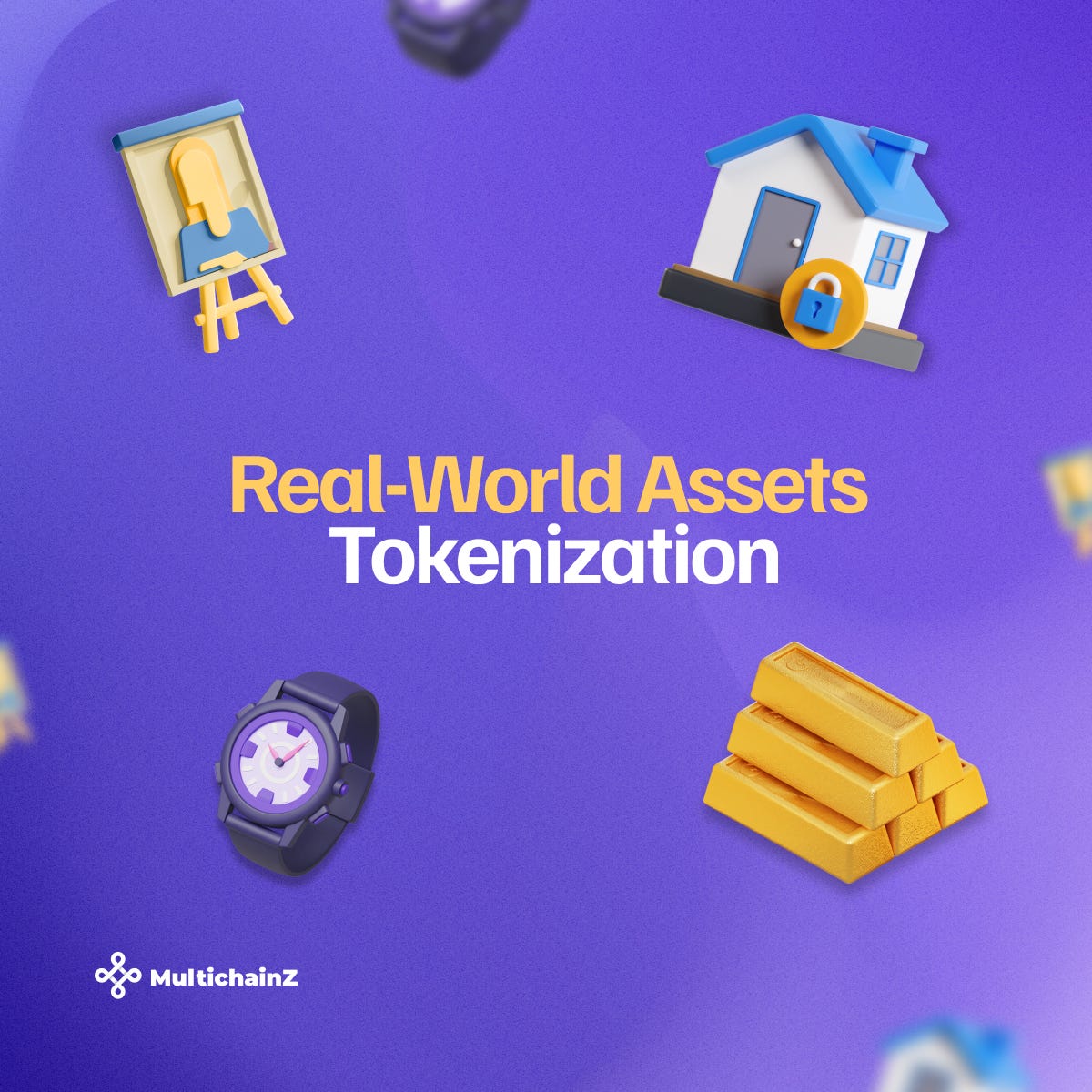Real-World Asset Tokenization: What Does It Mean?
Unlocking Value and Accessibility Through Digital Ownership on the Blockchain
Most of us could hardly imagine spending $450m for Leonardo da Vinci's "Salvator Mundi", or a hefty $200m for Jackson Pollock's "Number 17A."
But imagine if you could obtain "ownership stakes" in an artwork, akin to buying shares in a publicly traded company? This is the idea behind tokenizing real-world assets (RWAs), a method applicable not only to art but also to real estate and even cheese!
The tokenization of real-world assets (RWAs) extends beyond art to encompass bonds, vehicles, gold, houses, and various commodities. This concept is not only gaining popularity but also drawing interest from traditional financial entities. This article will detail the mechanics of real-world asset tokenization and the advantages they offer to investors.
How does tokenization of real-world assets work?
Tokenization merges digitization, securitization, and blockchain advancements. It transforms the ownership and rights linked to an asset, like a stock, bond, or real estate, into a digital token. This representation is stored on the blockchain and could potentially be traded in the open market. However, this doesn't mandate that an entire asset be depicted by a sole token. Tokenization also permits the division of asset ownership, where a single token can symbolize a fractional portion of the complete asset.
Storing on-chain substitutes the conventional physical documentation for ownership of assets.
The Benefits of On-chain Ownership
Costs are lowered by eliminating intermediaries like attorneys, brokers, banks etc.
Swift and efficient asset trading.
Reduces barrier entry and increases liquidity.
Its clear process promotes trust and responsibility.
Regarding the Leonardo da Vinci painting, if 10,000 individuals own shares in a particular artwork, they can speculate and trade those shares independently, without needing to coordinate with other co-owners.
Rather than involving a single seller with various entities like a gallery, appraiser, lawyer, and bank, the buyer and seller can directly trade with minimal gas fees for asset transfer.
Tokenization isn't limited to high-value items like real estate, and gold; it could extend to US Treasuries, currencies, and equities as well.
Bob Ras, co-founder of Sologenic, emphasized that blockchain transactions eliminate the up to 72-hour settlement period seen in traditional marketplaces. This speed and efficiency open opportunities for smaller investors with limited funds to engage in investments that might otherwise be inaccessible.
The most prevalent form of real-world asset tokenization is through stablecoins. Tokens like USDT (Tether) and USDC represent one dollar each, held in reserve, facilitating quicker and more direct settlements between parties.
The Future of Tokenization
Traditional financial entities are enthusiastic about the prospect of tokenizing assets they regularly trade, including gold, equities, and commodities.
In 2021, Franklin Templeton established the Franklin OnChain U.S. Government Money Fund on Stellar, expanding it to Polygon in 2023. This fund stands as the initial registered mutual fund in the United States conducting transactions and recording share ownership through a public blockchain.
The largest financial institutions in the world are already building the infrastructure to create tokenization of real-world assets to significantly improve securities markets. According to Blackrock CEO Larry Fink: "I believe the next generation for markets... for securities, will be tokenization of securities."
Data from CoinDesk indicates an increasing desire for tokenized US Treasury bonds, as the collective market capitalization of tokenized money market funds nears $500 million.
Currently, the outlook for tokenization appears promising, with the Boston Consulting Group, a global business consultancy, forecasting a $16 trillion market for tokenized assets by 2030.




Let's do it